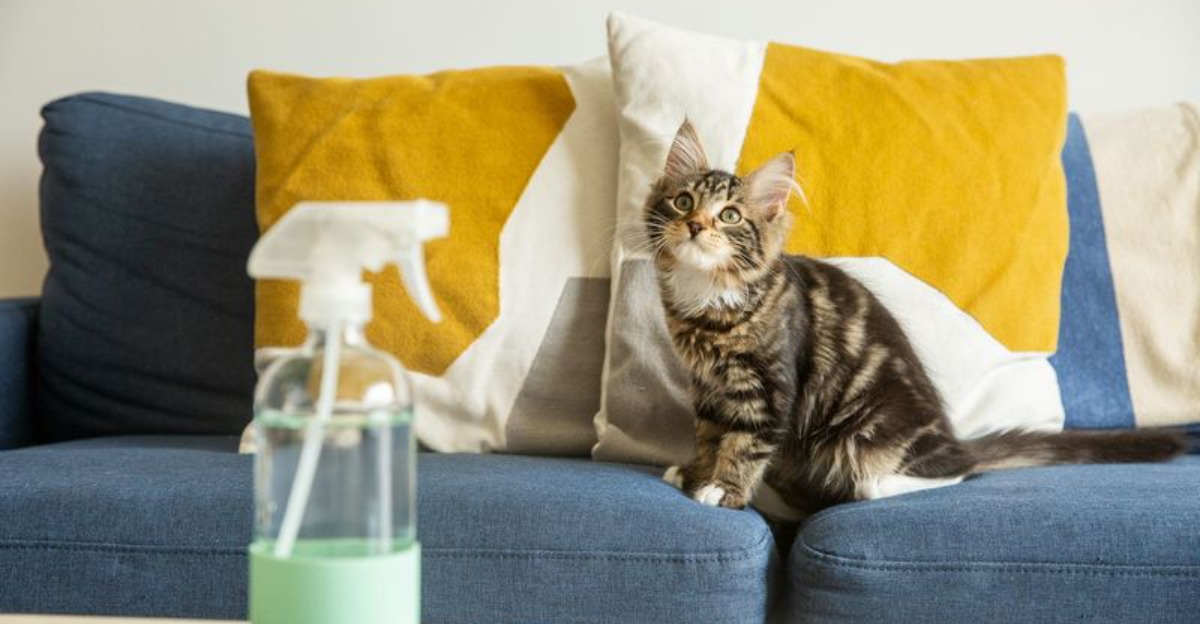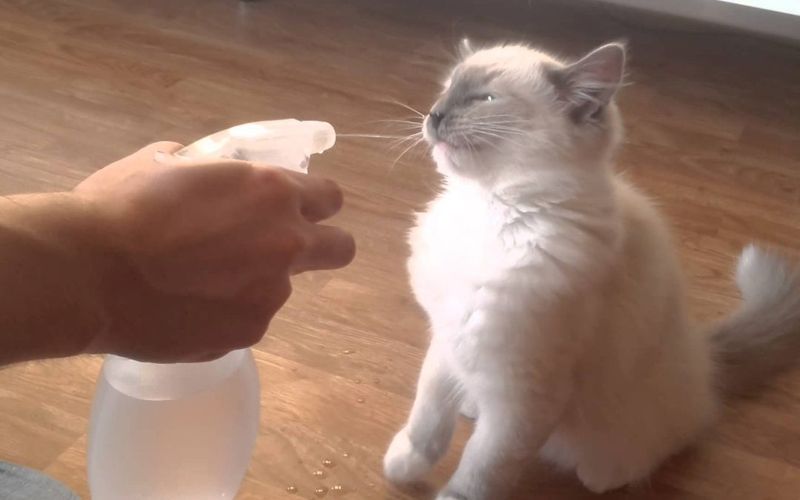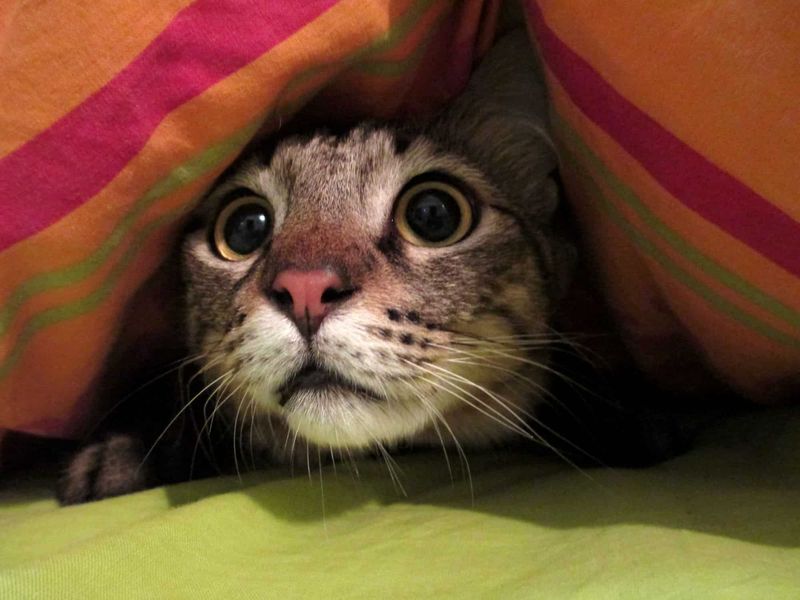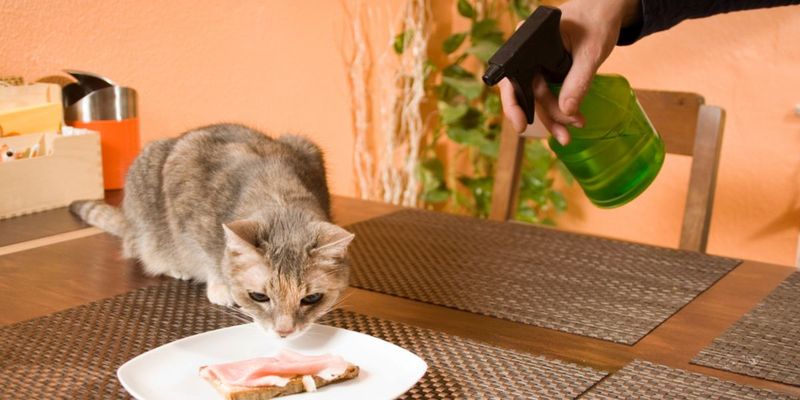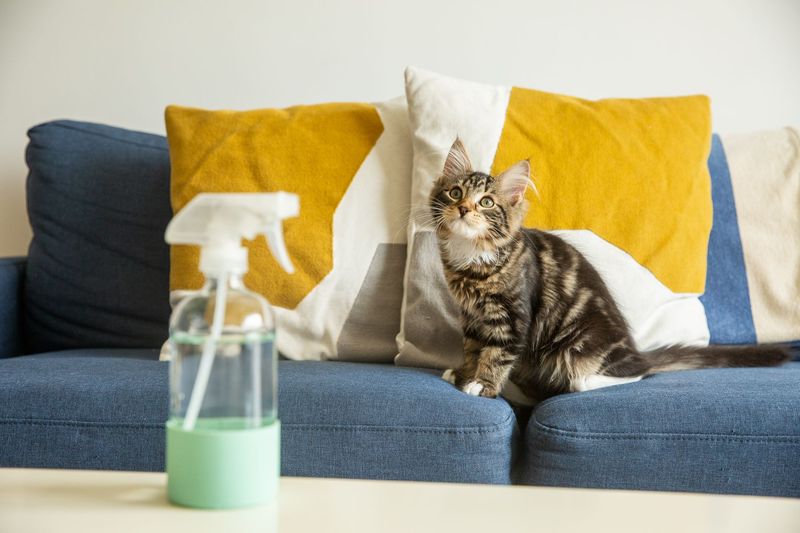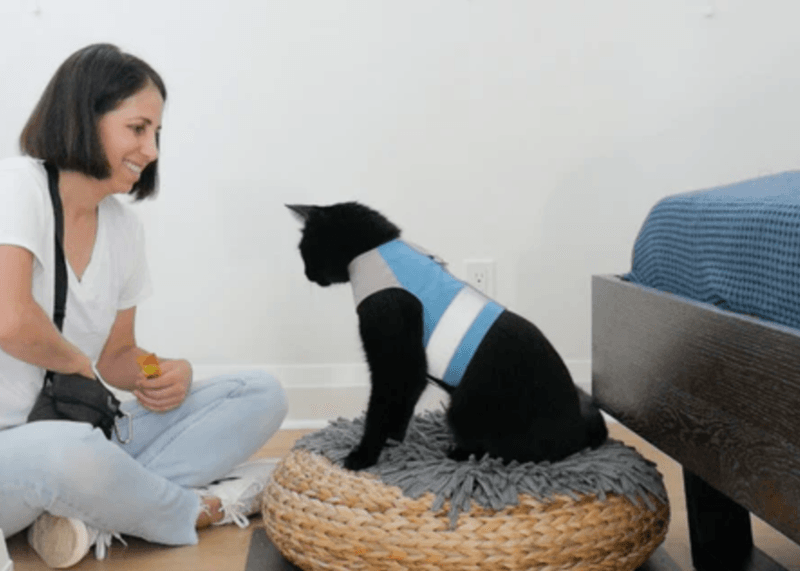📖 Table of Content:
- 1. It Breaks Trust Between You and Your Cat
- 2. It Doesn’t Teach the Right Behavior
- 3. It Can Increase Stress and Anxiety
- 4. It Encourages Fear-Based Behavior
- 5. It Only Works When You’re Present
- 6. It May Cause Aggression
- 7. It Damages Multi-Cat Dynamics
- 8. There Are More Effective, Positive Alternatives
Training a cat can be a rewarding yet challenging experience, especially when trying to curb behaviors like scratching furniture, jumping on counters, or waking you up at 3 a.m. In the quest for a quick fix, many cat owners turn to an age-old tactic: the squirt bottle. With just a spray of water, it seems like the behavior stops immediately — problem solved, right? Unfortunately, the reality is far more complicated.
While it might seem harmless or effective at first glance, using a squirt bottle to discipline your cat can lead to a range of unintended consequences. What may start as a simple deterrent can quickly become a source of fear, stress, and even aggression. Cats are intelligent and emotionally nuanced creatures; punishing them without understanding the why behind their behavior can do more harm than good.
In this article, we’ll explore eight reasons why squirt bottles often backfire when used as a cat training method. By understanding these pitfalls, you’ll be better equipped to foster a relationship based on trust, communication, and positive reinforcement. Let’s dive into why this common tool may not be the solution you’re looking for — and what you can do instead.
1. It Breaks Trust Between You and Your Cat
Trust is the foundation of any strong relationship, including the one you share with your cat. When you use a squirt bottle, it introduces fear rather than understanding. Your cat may associate you with the negative experience instead of linking it to their behavior. Over time, this can lead to a sense of betrayal and confusion. Instead of coming to you for comfort, they may become distant or avoidant. Many cats remember who administered the punishment, leading to long-term emotional distance. The damage caused may not be immediately obvious but can show up in subtle behavioral changes. Rather than building cooperation, squirt bottles often create emotional barriers between you and your feline friend.
2. It Doesn’t Teach the Right Behavior
Stopping bad behavior is only half the battle in training. Simply spraying a cat does not guide them toward what they should be doing. Without positive reinforcement or redirection, the unwanted action is likely to return. Cats thrive on consistency and clarity, which punishment alone doesn’t provide. A better approach would be to offer alternatives, like scratching posts or elevated spaces. Think of it this way: would you learn more from punishment, or from a clear, rewarded goal? Ignoring the need for redirection leads to confusion and repetition. Ultimately, squirt bottles interrupt behavior without teaching — and that’s a missed opportunity.
3. It Can Increase Stress and Anxiety
Cats are naturally alert and easily startled by loud or sudden stimuli. A squirt of water may seem small to us but can feel threatening to them. This kind of disruption may cause heightened anxiety in daily life. Over time, your cat might start flinching at fast movements or sounds. Chronic stress can manifest in ways like hiding, overgrooming, or changes in eating habits. Not every cat will respond the same way, but sensitive ones are especially vulnerable. Instead of promoting calm, this method can create a hostile home environment. Training should reduce stress, not escalate it — especially in companion animals.
4. It Encourages Fear-Based Behavior
Fear doesn’t foster learning — it sparks survival mode. Once a cat begins to associate fear with your presence, their behavior may shift dramatically. You might notice they begin hiding when you enter a room or resist being touched. That reaction stems from anxiety, not respect or understanding. Building a bond requires your cat to feel safe, not threatened. Unfortunately, punishment creates a dynamic where the cat constantly anticipates danger. This defensive posture can prevent healthy communication and growth. With fear-based methods, you lose the very connection that makes pet ownership meaningful.
5. It Only Works When You’re Present
Punishment tied to your presence teaches cats to behave only when you’re watching. Eventually, they learn to avoid the action when you’re around but resume once you’re out of sight. That kind of compliance isn’t real training — it’s performance. This creates a cycle where behavior isn’t truly addressed or corrected. Smart as they are, cats know how to outsmart punishment-based tactics. Consistency and environmental changes are more effective for long-term results. Using a squirt bottle may give a false sense of success. Ultimately, a tool that only works under supervision isn’t truly reliable.
6. It May Cause Aggression
Some cats don’t retreat when they’re sprayed — they push back. A squirt of water can trigger a fight-or-flight response, and in some cats, that means swatting or biting. What begins as an attempt to correct can escalate into a dangerous situation. This is especially true for bold or dominant cats who don’t respond passively to stress. Aggression can grow over time if the cat feels continually cornered or misunderstood. Even gentle cats may lash out when they feel overwhelmed. A better strategy involves calm redirection and understanding root causes. Using squirt bottles can unintentionally unleash behaviors you weren’t prepared to handle.
7. It Damages Multi-Cat Dynamics
In homes with multiple cats, punishing one can ripple through the group. Other cats nearby may become alarmed by the noise, movement, or reaction. Tension in one cat often spreads, affecting the overall mood of the household. You might see a breakdown in formerly peaceful relationships. Cats are sensitive to each other’s stress and may react by becoming territorial or withdrawn. Group dynamics depend on harmony and mutual safety. When that’s disrupted, behavioral problems can multiply. A single squirt can lead to collective confusion or fighting among your pets.
8. There Are More Effective, Positive Alternatives
Instead of relying on punishment, positive reinforcement sets cats up for success. Rewarding good behavior with treats, praise, or play makes learning enjoyable. Cats are more likely to repeat behaviors that are positively acknowledged. Training with kindness also builds a stronger emotional connection. Clicker training, for example, has been proven highly effective for shaping feline habits. Tools like puzzle feeders or environmental enrichment can address the root of misbehavior. Focusing on what your cat can do opens the door to better cooperation. The
